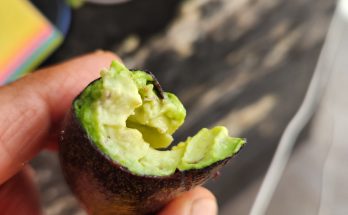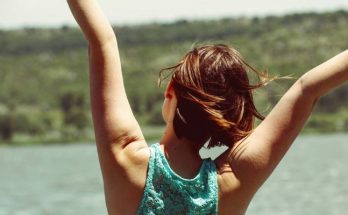Sierra Gorda Expedition
By Martin Buenviaje
Rural, regenerative tourism is a different way of traveling, with the aim of reducing our footprint on the few remaining biological treasures, and restoring health to us and the Earth. I had the honor of spending a few days with Mario Pedraza and his family at his Suelo Vivo ranch. It is located in the Sierra Gorda of Querétaro, in the heart of Mexico, and just four hours from San Miguel de Allende. We really enjoyed the road that took us to the ranch. There were curves along the landscape, crows, eagles and vultures escorted us. We went deeper and deeper into the forest, until we reached a cabin lost among giant oak trees.
While we were there, we were received by the guardians of the place, some cows, a flock of sheep, a few goats, roosters, Spirit (the horse), a flirtatious turkey that never stopped eyeing me, and Lobelia, a very intelligent and sensitive mule. Everyone was singing, welcoming us.
In the dining room a country meal awaits us, in a wood-fired kitchen. There was a cheese platter, sausages, freshly harvested salad from the garden, sourdough bread, nixtamalized tortilla; all made by our hosts. We uncorked a natural, organic wine and I asked Mario: “Who are you?” He replied: “I’m like a microorganism on earth, which is in charge of cleaning the space that belongs to it.”
This felt like a sincere and true response, after we saw everything he has achieved. He has worked his land for more than 20 years, living sustainably with his wife Marta and their two children (Mario, 6 years old, and Emilia, 8). He also told me that his children don’t go to school, because they believe in homeschooling.
As they say: «Like father, like son.» Mario comes from a family of “true guardians,” His mother, Pati Ruiz Corzo, was a music teacher in the city of Querétaro, a city woman with «high heels,» as she describes herself, until one day «nature touched her» and she decided to take her husband Roberto, and their two children, Roberto and Mario, 8 and 6 years old, to the forest school. The first few years they had to get used to living with firewood, without gas, without light, and changing their diet completely, since there were no shops nearby.
For more than 35 years, Pati, has served as director of Grupo Ecológico Sierra Gorda (https://sierragorda.net/ ). It is a non-profit foundation that operates on more than half a million hectares, and is devoted to reforesting Sierra Gorda—one of the most biodiverse ecosystems in the world. Here, they have planted more than 2 million trees, and they guard some of the last cloud forests of the Sierra Gorda—where neither humans nor cows can enter, and home to bears and jaguars. They do this with the support of a UK foundation. Roberto, her son, patrols the area every week to prevent poaching, fires, clandestine ranchers, and even domestic dogs neglected by their owners that end up attacking and killing wildlife. Mario and his ranger are like “Forest Sheriffs,” and thanks to this intense work, the Sierra Gorda is now officially a “Biosphere Reserve.”
Here is a little history. For me, all that I see now began to form part of my life 11 years ago, when I met Roberto in the Sierra, and he led me to explore these true «arks of life,» which are home to so many species. It was at that meeting, while I was searching for language and learning animal communication, that I understood how important the work he and his family were doing. Because without land there is nothing. Today, this truth is my most important priority in life. How can I contribute something with my work? Well, for example, sharing this experience and helping, where possible, to raise awareness of the importance of regeneration and care for the land, and of the Earth. Inviting others to visit Rancho Suelo Vivo, supporting rural tourism.
Roberto is an explorer, researcher, guardian and protector of flora and fauna, and also a great wildlife photographer. Many of his photographs have been published in National Geographic magazine. Living with Mario in his «Rancho Suelo Vivo» is an experience that led me to rethink many more things. How, for example, to be an agent of change with my work and hope to live sustainably in the countryside. It fills me with joy to know that we can still restore the health we took from Earth, without a backup plan, like going to Mars to live on Elon Musk’s ship. Now I could see with my own eyes that, with dedication and good planning, you can regenerate dead soil. Yes, even those where not a single leaf grows.
These cloud forests are factories of water and carbon, true sources of life, where deer, jaguars, foxes, black bears and macaws live. There are also many that are in danger and at risk of extinction.
Mario works to regenerate the soil through livestock. He does better with sheep and goats than with cows, because of the mountains. He tells me that animals are our best tools to recover the fertility of the fields. Of course, it must be done intelligently and with well-planned holistic grazing management. It is where the animals massage the soil and make it more alive, richer in nutrients, without the need for chemicals, and without stressing the animals. It is a return to a balance of the ecosystem where everyone—fauna, flora and humans—win.
Thanks to his more than 18 years of experimentation, Mario makes delicious cheeses and sausages. Marta, his wife, works the garden. She tells me that it has no pests and does not require any pesticide. It is the same as the human body: the healthier we eat, the less our diseases, because we are no longer food for parasites.
To read the complete story, visit atencionsma.com/en/
After a day of exploring and contact with the land, we stayed to sleep over in the camping area. There were two beautiful yurts with super comfortable beds, electricity, light, bathrooms, showers with hot water, and a wood-fired field kitchen. If you prefer, you can bring your own tent, because they have other, more secluded campsites at the top of the forest. Anyway, the hosts bring you the food you will eat while you are there. Here you harvest what you eat, from the field to the table; a real luxury. I think even the best chef falls short of the freshness of eating such nutritious food.
The next day we did some hiking and I learned more about the flora and fauna of the place. They have professional archery, a medieval artisan forge workshop to make your own tomahawk axes or knives, ethology with horses and a gifted mule, a cheese, sausage, whole wheat bread workshop. They also have professional workshops for ranchers that teaches them how to be sustainable and more profitable, and how to regenerate the soils with better livestock management.
I was able to get close to meet Spirit, who is the direct nephew of the famous horse from the animated film of the same name. His breed is Kiger Mustang. I was able to caress him, and watched as Mario’s daughter combed him. This purebred steed is a beautiful specimen. I also met their mule which, they tell me, is even more sensitive than the horse. I was impressed, because it was so sensitive that it even feels when a dragonfly lands on it. They live a long time, up to 35 years. I watched and learned a little about the milking of cows, and goats. How cheese is prepared, formed into discs and how later it is taken to a cellar to mature for a few months. Also, how a beloved little mushroom gives their cheese that touch of flavor that is so, so delicious. My mouth waters as I write this even thinking of it.
From time to time, deer approached, which for me are like the kings of the forest. Some curious raccoons, tough armadillos, a few jaguarundis cats that are quite scarce, and cunning foxes all showed up. Seeing any of these species is a visual treat. This is a family that with their effort and dedication, brings life back to the earth. They invite us all to enjoy it, and I thank them for adopting me for a few days. See you soon.




